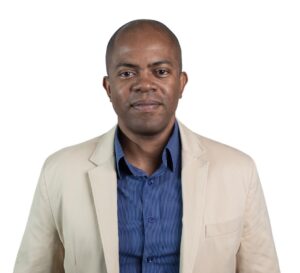In the month that celebrates Black Awareness, Horiens is promoting the campaign “Time to Innovate”, an initiative by the...
The essence of risk management | Meet Risk Labs
DATE: 05/29/2024

Márcio dos Santos is the head of Horiens’ risk analysis laboratory, Risk Labs. The civil engineer with a master’s degree in geotechnical uncertainties and risks has been involved since the conception of the project. In this interview for the series “Seeing beyond”, he explains how predictive analysis works in conjunction with the human eye.
As the material was very rich, we will divide it into three publications. In this first interview, Márcio tells us how Risk Labs began and how it is used to support clients in their challenges.
How was Risk Labs conceived?
Risk Labs was created in 2017 to be a temporary structure. We already had a very substantial database, accumulated over decades of experience at Horiens, and a desire to enter this world of analytics and predictive analysis. We benchmarked the market to find out how laboratories work. We saw banks, industries, large retail companies. So we came up with a way of doing things, which was to lead the initiatives and set them up by project, with these temporary structures.
The first challenge was health modeling. Right from the start we were very impressed with the numbers and the results. Even without predictive modeling or machine learning, we were able to gain a very interesting understanding of our health portfolio in simpler or exploratory analyses, as we call them. We then went on to develop the actual predictive model, to predict health claims and thus support negotiations and reorganization strategies in the portfolio.
The structure, which was temporary, ended up being permanent, because we saw that it had many benefits, an important commercial appeal and the positioning of our brand and way of working as well. Eventually, new demands arose as companies learned that we were doing this. Then we started working on other themes. Right after health was accident risk analysis and civil liability in a railway operation in Rio de Janeiro. We made models to predict court decisions on civil liability lawsuits involving the client. We did this work in order to be able to discuss the renewal of the liability insurance policy with the insurance company, set deductibles, in short, make business decisions regarding insurance.
After civil liability came the pricing of a new life insurance policy. Then operational dam modeling insurance. And so it has endured. Today, people understand how Risk Labs can help with a wide range of issues.
Was an initial investment in structure necessary?
Initially there was investment, especially in people and training. We have the acceleration of a company formed by graduates of IME-USP (Institute of Mathematics and Statistics of the University of São Paulo). They helped us at the beginning of this journey with acculturation, training on modeling, etc., especially in a tool we use, which is part of the low code approach.
As soon as Labs was born, we knew that we didn’t want a group of programmers looking for the perfect code. We were looking for pragmatic, fast applications that would bring tangible results. That’s why we went for the low code approach. Instead of doing the command lines in programming, we take this approach so that we can speed up the results and focus on what we need. We invested in a tool called Knime analytics, which is a German-Swiss advanced analytics and artificial intelligence platform. The idea is to have pre-programmed functions and built-in boxes of programming lines, which connect and automatically execute the codes. Our biggest investment is in people and structure, software, processing and data storage. We started from scratch and it’s still an evolving process, making adjustments. We’ve had challenges, for example, processing in the cloud when it comes to “interfacing” the processing with the database, deployment and access.
Is Risk Labs used when putting together a new proposal?
Yes, it’s our investment. We carry out this analysis in order to propose improvements and bring benefits to clients, such as being less protected than they need to be.
How is information processed?
Not every problem deals with data. What we always have is information. Data not always. Even with information, we were able to do risk analysis. This is how it is done in some areas where you don’t have as much data to support predictive analysis based on frequency of observation. Information from experts in the field may already be enough to support risk analysis. Data improves this, but information is the key. So it really depends on the nature of the problem. For the challenge of modeling the exposure of the operation’s civil liability, we had a lot of data, which still needed to be structured, but allowed us to build predictive models of the chance of lawsuits being upheld and the size of the settlement if the lawsuit was upheld. We call this type of analysis frequentist, which is when there is a mass of data. This is the most common and well-known on the market.
There is another type, such as for the safety risks of dams or tunnels, for example, where there is much more information on design, geology, etc. but no collapse data. You would need to have thousands of dams’ data over several years to be able to build a model based on frequency, to say what the chance of a dam collapsing is. Data ready to be used for risk analysis is rarely available. There is data on the quality of the concrete, the soil, etc. Using this information and engineering data, combined with engineering models, makes it possible to simulate and build probabilistic simulation models to assess safety and the chance of accidents in these occupations. It doesn’t have claims data, but you can simulate the chance of a claim from this indirect data. It’s more of an engineering challenge than one of statistics or actuarial calculation.
This is used to make decisions about the size of the risk that the client wants to transfer or retain. Not just for this type of risk, but to define franchises, for example, which are smaller and more frequent risks. Here at Horiens, we are specializing more and more in this approach to engineering.
Risk Labs technology is available to support all companies in their risk decision-making. Visit https://www.horiens.com/quem-somos/risk-labs/ and consult our experts to find out more.



No comments